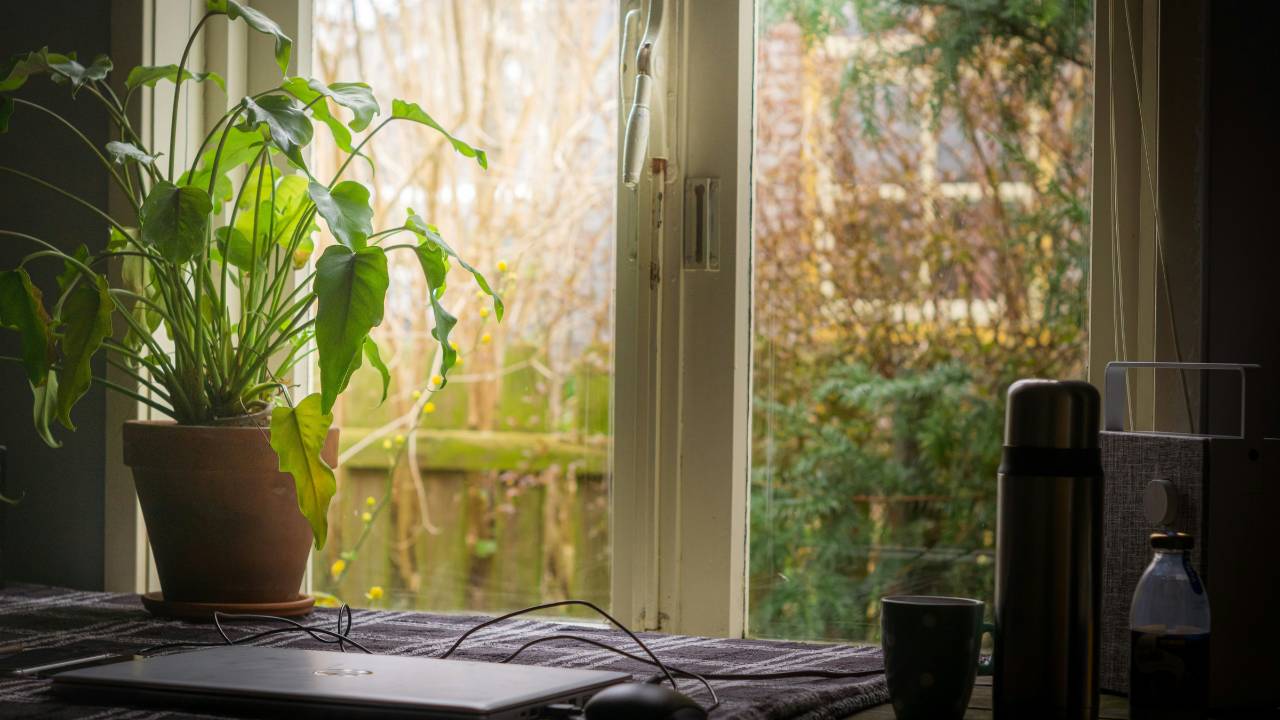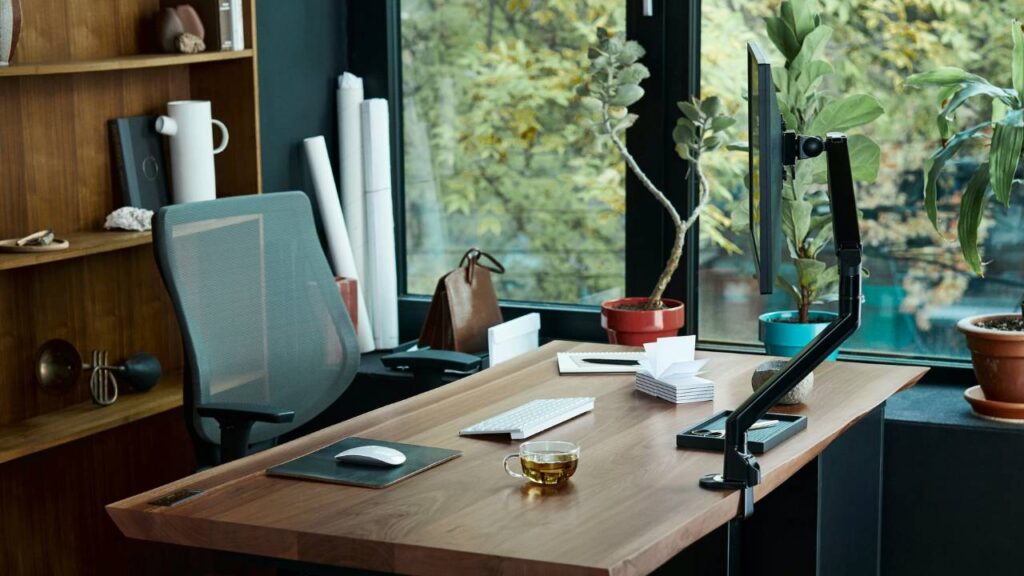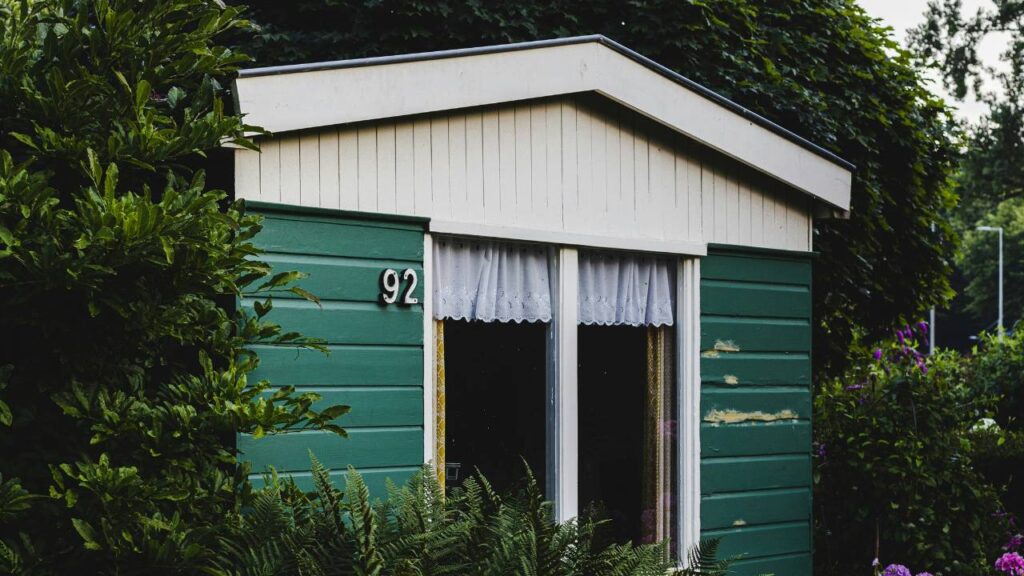
Creating a comfortable and efficient workspace has become essential, especially with the increasing trend of remote work. A garden office provides an ideal solution that combines the tranquillity of nature with the functionality of a traditional office. This secluded workspace not just bolsters your productivity but also enhances your work-life balance by offering a distinct separation between home and work.
When you’re planning your garden office, consider how the natural surroundings can positively impact your work routine. Position your garden office to take advantage of natural light, and think about how the design and layout can best serve your needs. It’s not just about creating a space to place your desk and your computer, but rather, crafting an environment that promotes focus and inspiration.
Selecting the right materials and technology for your garden office will ensure that your space is not only comfortable but also energy-efficient and secure. From insulation to internet connectivity, your garden office requires careful consideration to become a fully functional workspace. With thoughtful planning, your garden home office can be the perfect professional oasis that supports and enriches your work-from-home experience.
Laying the Foundation
Before diving into the construction of your garden home office, it’s crucial to establish a solid and legal foundation. This will ensure your building stands the test of time and adheres to local regulations.
Planning and Permissions
Before you start laying your foundation, you need to ensure that you have the proper planning permission or are within permitted development rights. Check with your local authority via the planning portal to determine if your project needs permission. Some home extensions fall under permitted development, but it’s essential to confirm this to avoid legal issues later on.
- Planning Permission: May be required if your home office exceeds certain sizes or if you live in a listed area. Documentation and fees will be part of the application process.
- Permitted Development: Check the specific conditions and limits, such as building height and distance from the property boundary.
Choosing the Right Base
Your garden office needs a stable base to ensure longevity and structural integrity. The type of foundation you choose will largely depend on the ground conditions and the size of the structure.
- Concrete: Ideal for larger offices, providing a level and sturdy base.
- Timber: Suitable for smaller structures and easy to install.
- Paving slabs: A cost-effective option for very small offices or where ground conditions allow.
Consult a professional to assess ground conditions for the best recommendation.
Foundation Materials and Tools
The materials you select for your foundation should be of high quality to safeguard the longevity of your garden office. Here’s a list of the typical materials and tools you will need:
Materials:
- Concrete: A mix of cement, sand, gravel, and water.
- Timber: Treated wood for durability against moisture.
- Paving slabs: Dense, flat stones, if appropriate.
- Damp-proof membrane: To prevent moisture ingress.
Tools:
- Shovel
- Concrete mixer or wheelbarrow
- Spirit level
- Trowel
- Tape measure
- Saw (for timber bases)
- Hammer
Equip yourself adequately and prioritise building regulations to ensure your foundation is both compliant with legal standards and structurally sound.
Designing Your Garden Office

Creating a garden office combines functionality with the serenity of nature, offering you a tranquil space to work remotely. Prioritise design features, spatial efficiency, and personal touches to align with both your professional needs and aesthetic preferences.
Selecting the Size and Style
Choosing the right size for your garden office depends on available space and your professional needs. Here’s a quick guide to help you decide:
- Space: Measure your garden area to determine the maximum office dimensions.
- Use: Consider how you’ll use the space (solo work, client meetings, storage needs).
- Styles: Explore a range of styles, from eco-friendly pods to classic garden rooms, and select one that complements your home’s aesthetics.
- Bespoke Design: For unique needs, opt for a bespoke design that can cater specifically to your preferences and garden’s characteristics.
Incorporating Light and Layout
Maximising natural light and crafting an effective layout are key to a high-functioning home office:
- Light: Position windows and skylights to capture daylight, reducing eye strain and electricity use.
- Layout: Place your desk strategically to face the garden, boosting mood and creativity.
- Design Feature: Consider adding biophilic elements to blend the office with the garden, enhancing the remote office experience.
- Decoration: Use light, neutral colours to make the space feel larger and brighter.
Extras and Personal Touches
Infuse your personality into your garden office with thoughtful decorations and extras:
- Eco-Friendly Options: Integrate solar panels or green roofs for sustainability.
- Modern Touches: Install smart technology for convenience and a modern feel.
- Decoration: Decorate with plants, art, and comfortable furniture to make the office truly yours.
- Aesthetics: Details matter. Select quality finishes and harmonious decorations to elevate the office space.
- Zoning: Zoning a garden room can reflect your personal style while meeting your practical needs.
Construction and Insulation
Creating a home office in your garden requires attention to both sturdy construction and effective insulation. Ensuring your office is well-built and insulated will provide a comfortable work environment year-round.
Building the Structure
When building your garden office structure, it’s crucial to conform to building regulations. Start by laying a strong foundation, typically a concrete slab, to ensure stability and longevity. Use quality materials for the framework, which often involves wooden beams or steel frames. Tools such as a hammer, saw, drill, and level are essential for this stage. For a DIY project, a clear set of instructions is invaluable. If construction is not your forte, hiring professional builders is advisable to guarantee the building’s safety and durability.
Ensuring Proper Insulation
Proper insulation is key to maintaining an ideal temperature within your garden office. Your walls, roof, and floor should be insulated with materials such as rockwool or rigid foam boards to prevent heat loss. The rafters and wall cavities should be filled with insulation material. Beyond the insulation, make sure to install double-glazed windows and sealed doors. To comply with regulations and ensure safe installation, particularly with thermal products and potential electrical work, consider consulting with an electrician. Achieving a well-insulated office not only increases comfort but also reduces energy costs in the long-term.
Electrics, Heating, and Plumbing

Creating a functional and comfortable home office in your garden requires proper planning and installation of electrics, heating, and cooling systems, along with adequate plumbing if necessary. Here’s how to ensure you get these critical aspects right.
Installation of Electricity and Lighting
When installing electricity and lighting, safety and adequacy are paramount. You’ll need to run an armoured cable from your home’s main power supply to your garden office. A qualified electrician should carry out this work, adhering to local building regulations. Consider the following for your garden office:
- Circuit Breakers: Ensure you have a dedicated circuit breaker for your office to prevent overloading.
- Power Outlets: Plan for at least one double outlet per wall to avoid extension leads, which can be a trip hazard.
- Lighting: Incorporate both overhead lighting and task lighting for ample illumination.
- Solar-Powered Options: For sustainability, explore solar panels to reduce reliance on grid electricity.
Heating and Cooling Solutions
To stay comfortable year-round, you’ll need effective heating and cooling solutions:
- Insulation: Properly insulate your space to maintain temperature efficiently.
- Heating Options: Consider underfloor heating for a cosy, space-saving solution. Alternatively, wall-mounted electric heaters are effective and can be easier to install.
- Cooling Options: A ceiling fan or a portable air conditioner can provide adequate cooling during warmer months.
Plumbing Requirements
If your garden office needs a water supply or drainage, you’ll have to plan for plumbing. It’s a complex process that includes:
- Water Supply: Extend a cold water pipe from your main house if you require a sink.
- Waste Water: Establish a connection to the existing drainage system for disposing of waste water.
- Compliance: Any plumbing work must comply with local codes and often requires professional installation.
- Alternative Options: If full plumbing is impractical, consider water carriers and environmentally-friendly waste disposal methods.
Finishing Touches and Maintenance

After constructing your garden office, it is essential to give it a personality and ensure it remains a functional space for years to come. From the interior aesthetics to long-term maintenance, every detail contributes.
Interior Decoration and Furniture
Your home office should be a space where functionality meets comfort. Begin with an ergonomic chair and a spacious desk to boost your productivity. Opt for a desk with ample surface area for your computer, supplies, and notepads. Use double glazing for windows to maintain temperature control and reduce noise. For decoration, add personal touches with artwork, indoor plants, or a small bookshelf to make the space inviting.
- Furniture Checklist:
- Ergonomic chair
- Spacious desk
- Storage solutions (bookshelves, filing cabinets)
- Comfortable lighting
Exterior Features and Landscaping
First impressions matter, so invest in exterior aesthetics. Decking or pathways leading to your garden office creates a tidy and professional approach. Surround your garden pod or summerhouse with landscaping that complements its design, like flowering shrubs or decorative grasses, to blend it nicely with the environment. A privacy fence or hedges can provide seclusion, creating a tranquil work setting.
- Landscaping Ideas:
- Deck or stone path
- Flower beds or shrubs
- Privacy features (fences, hedges)
Maintenance and Upkeep
Regular maintenance is crucial to preserve the value and appearance of your garden office. Schedule annual checks for wear and tear, especially after harsh weather. Security measures such as locks and security cameras will ensure the safety of your office equipment. Treat wooden elements like decking to prevent rot and decay. Clean your gutters, check the roof for leaks, and refinish the exterior as needed to keep your garden workspace in prime condition.
- Maintenance Routine:
- Check and treat wood surfaces annually.
- Inspect roofs and gutters each season.
- Update security features as technology advances.